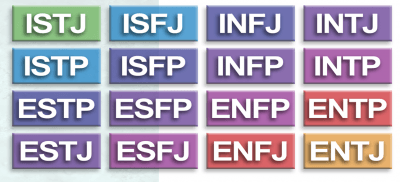
24 May 2016 Communicate effectively using MBTI Type
 Communicate effectively using MBTI Personality Type
Communicate effectively using MBTI Personality Type
When we think of improving communication using the Myers Briggs Type Indicator (MBTI), most people immediately think of how differences in Introversion and Extraversion can affect how we communicate effectively with others.
People don’t immediately think of how the second set of preferences of iNtuition or Sensing can also affect the way we communicate with others.
This will be the first of a two-part series with my second article focusing more on using MBTI Step II Facets in Communication. (ie Concrete and Abstract). So read on to discover how you can improve the way you communicate effectively with those who may be opposite to you on this this personality preference.
If you are not familiar with the Myers Briggs, MBTI Framework, you can read more about that here. But briefly, Psychological type theory describes four pairs of preferences for:
- How you are energised (Extraversion or Introversion)
- How you take in information (Sensing or Intuition)
- How you make decisions (Thinking or Feeling)
- How you go about your daily life (Judging and Perceiving)
The combinations of these eight preferences results in 16 psychological or personality types, each with a natural, created way of being – each with its own distinctive approach to life.
So in this article, I thought I would focus on how your preference for either Sensing or iNtuition can affect the way you communicate effectively with others; especially in situations where you are trying to sell an idea or a concept.
So what are those differences?
Sensing Preference
So those with a sensing (S) preference are keen to hear the detail and like to know what your suggestion entails. They are generally looking for the What; the How; the When and the Who etc. They don’t like to start something that has not been proven before somewhere. If it is not broke, they prefer not to change it. They prefer incremental change rather than radical change. They also like things to be communicated sequentially or step by step so they can build an internal picture of what you are communicating.
iNtuition Preference
On the other hand, those with an iNtuitive (N) preference tend to be more conceptual and abstract in their thinking. They would prefer to have the big picture communicated first. Your vision, the expected outcomes, the benefits etc. If you can sell them on this, you have generally won them over. After that, they may want more detail. (…or this may not even interest them!) Presenting information sequentially is not as critical. They love new ideas, even if it has never been tried before.
So when you communicate with someone who has the same preference as you do in regards to taking in information (Sensing or iNtuition), then generally the communication is smoother. You are communicating in a way that the other person prefers to take in information so it just works better. However…. when you communicate with someone who has the opposite preference, things start to get a little trickier! Now the other person wants to take in the information you are presenting quite differently. You may not communicate effectively at all.
INtuitives types will want you to get to the point quickly. They will want to know for instance:
- A high-level concept or plan
- How this will benefit the team or the business?
- What this will look like when completed?
- On what theory or research did you base your idea on?
- Is it new, ground-breaking, exciting etc
Sensing types will expect lots of detail about the proposed change. They will want to know:
- Why you are changing things at all anyway
- The precise details are you proposing
- When will this be happening?
- How much does it cost?
- Has it been done before?
- How do you propose to implement this?
….and so confusion or frustration can often occur. At the very least, the communication will not be as effective.
For instance,
A while ago, I was chatting with someone who was having a hard time relating to their manager at their bi-weekly catch ups. This person assumed their manager was not interested in her work and she could not work out why! The manager would seem largely uninterested and often interrupt to ask questions like; “what exactly are you trying to achieve here? … and the like. She sensed her manager was in fact getting quite frustrated and had begun cancelling or deferring their catch-ups.
I asked this person to show me how she was presenting information to her manager. She showed me an incredibly detailed task list with each task broken down into smaller detailed sub-tasks and with very clear timelines. She would give a copy of this list to her manager and then began her catch ups by taking her manager sequentially and methodically through this long list of Tasks highlighting progress on each Task as she went. She quickly picked up on the fact that her manager was disinterested but could not work out why!
As it turned out, I happened to know her manager was an iNtuitive type (INFP as I recall) Though I did know the MBTI type of the person asking me the question, the way she methodically worked her way through her very long an detailed To Do List was an obvious sign to me she was more of a Sensing type. (I suspected E S T/F J) On that basis, I suggested that in the next catch-up, she focus on the big picture first, giving only a short summary of where she was at and only present the detail if the manager wanted to know more. I advised not handing over her detailed To Do List unless her manager asked her for it. Just provide a summary only.
The Result
A week later she phoned me excitedly to say how the next catch up went so much better. Bingo! Her manager seemed so much more interested. Modifying her communication style to match the communication preferences of her manager had done the trick.
I hope this is helpful. If you would like to know more about how the MBTI Tool can assist you or your team to communicate effectively with each other, I would welcome the opportunity to chat further.
In the Part 2 of this series, I will take a look at how using the MBTI Step II Facets can assist you in fine tuning this communication even more precisely!
You can check out our MBTI Team Building Program here
Geoff Prior – Lingford Consulting, May 2016
Workload & Email Management Training/Coaching. MBTI Consultant



No Comments